Collection of E textile Swatches.

|
Swatches in progress
These swatches contain a fabric part and an electronic part.
Often electronics and fabric or other materials are intertwined,
mixed, used by each other.
|
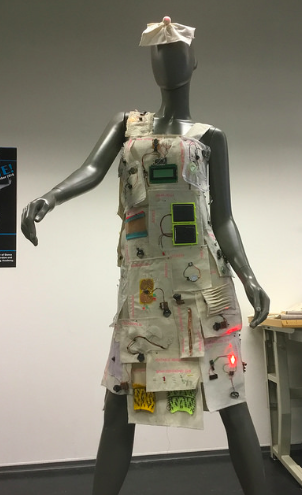
|
|
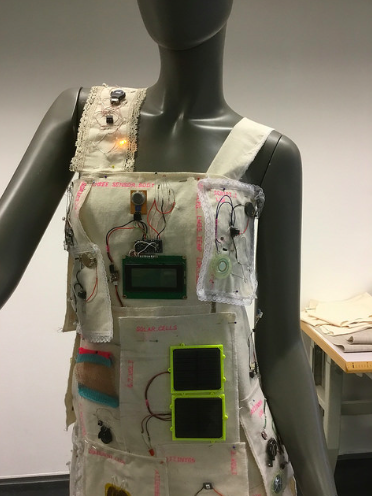
|
The dress of swatches could symbolize or give an impression of the complexity of our skin.
|
Circuit, buttons and switches
Using fabric gives rise to an infinity of possibilities in closing and opening a circuit. Aluminum foil is a very cheap material compared to the expensive metal weavings.
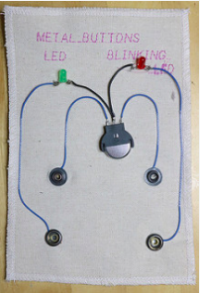
|
Buttons of metal, used for trousers as a switch.
(Coming.)
|
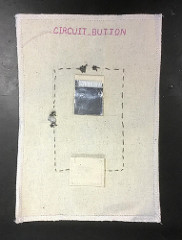
|
Big ring of metal used as a switch.
(Coming.)
|

|
Piece of aluminum foil on fabric using flysofix as a switch which folds to close the circuit and start an led.
|
ATtiny85 swatches
The ATtint85 as a cheap workhorse.

|
Charlieplexing, 8 leds connected to the four pins of the ATtiny85.
|
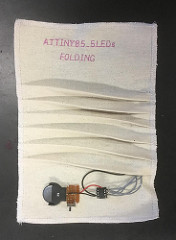
|
Folding with ATtiny85 and 5 leds. An example of interaction between material and led.
|
Sensor swatches
Sensors are one part of the sensor, actuator, microcontroller trinity.

|
Tilt sensor made of three conductive patches which form a circle.
The circuit is closed by swinging the bead over these patches.
Example of low tech sensor.
(Coming.)
|

|
LDR in combination with a fixed resistor.
ATtiny85 can blink with 2 leds.
A script can make the leds blink, glow.
|
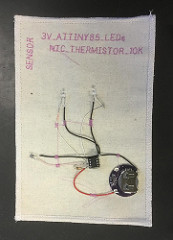
|
Themistor (NTC) with a fixed resistor.
ATtiny85 can blink with 2 leds.
|
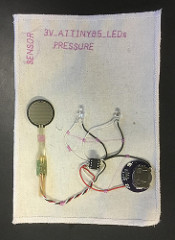
|
Pressure sensor with a fixed resistor.
ATtiny85 can blink with 2 leds.
|

|
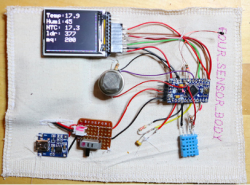
|
Arduino Pro Mini with LCD screen and 3 sensors, light, temperature and pollution.
Lipo battery plus charger.
|
Led swatches
The variations in leds is endless. Interesting is the difference in voltage between the colors, which might lead to surprises if you connect different colors in parallel.
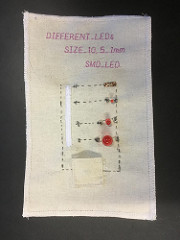
|
Different red leds, from 10mm, 5mm, 1mm and an smd led.
|

|
Parallel leds in a circuit with an open connection, use something conductive to close the circuit.
Coming soon.
|
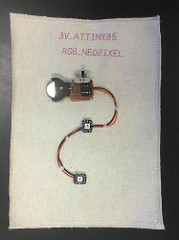
|
RGB neopixels. ATtiny85.
One of the neopixels is covered by filling and cloth to investigate the effect of the light under fabric.
(Coming.)
|

|
A piece of copper strip with smd leds soldered on the copper strip.
Parallel connections.
|
555 swatches
The 555 is an old component, used for a timer, but also for making noise, sirens and alarms.
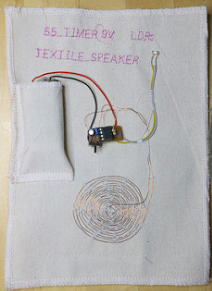
|
Textile speaker. 9V, use of magnets.
The 9V is necessary because the textile speaker is producing a very low volume level.
LDR for variable input, causing the tone to rise and fall.
|
Transistor swatches
Transistor acting as an amplifier and as a switch.
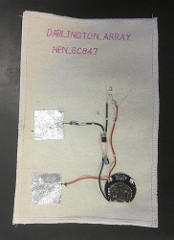
|
Darlington array. By amplifying the signal with 2 transistors you can detect if a human touches a pad of aluminum foil.
You need to touch both pads.
|
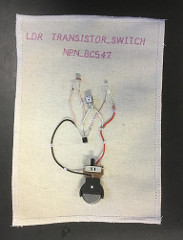
|
Transistor switch.
LDR in connection with a fixed resistor makes the BC457 into a switch.
|
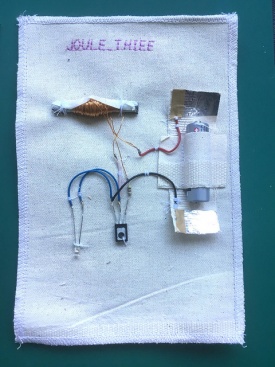
|
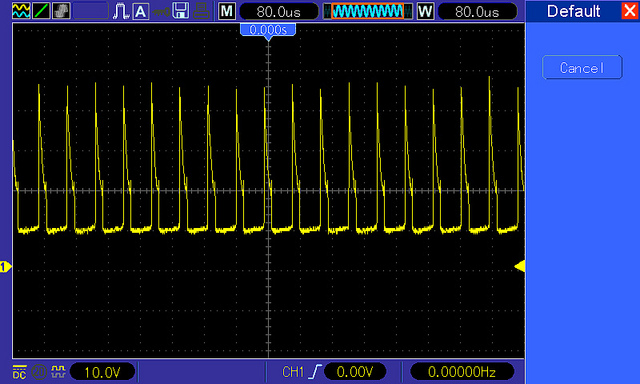
|
Joule Thief.
A double coil and a transistor act as a boost circuit, so an led can be lit by a 1.5 Volt battery. (No free energy of course).
The circuit is activated by closing the two pieces of fabric with all foil around the battery (fabric battery holder - switch).
|






















